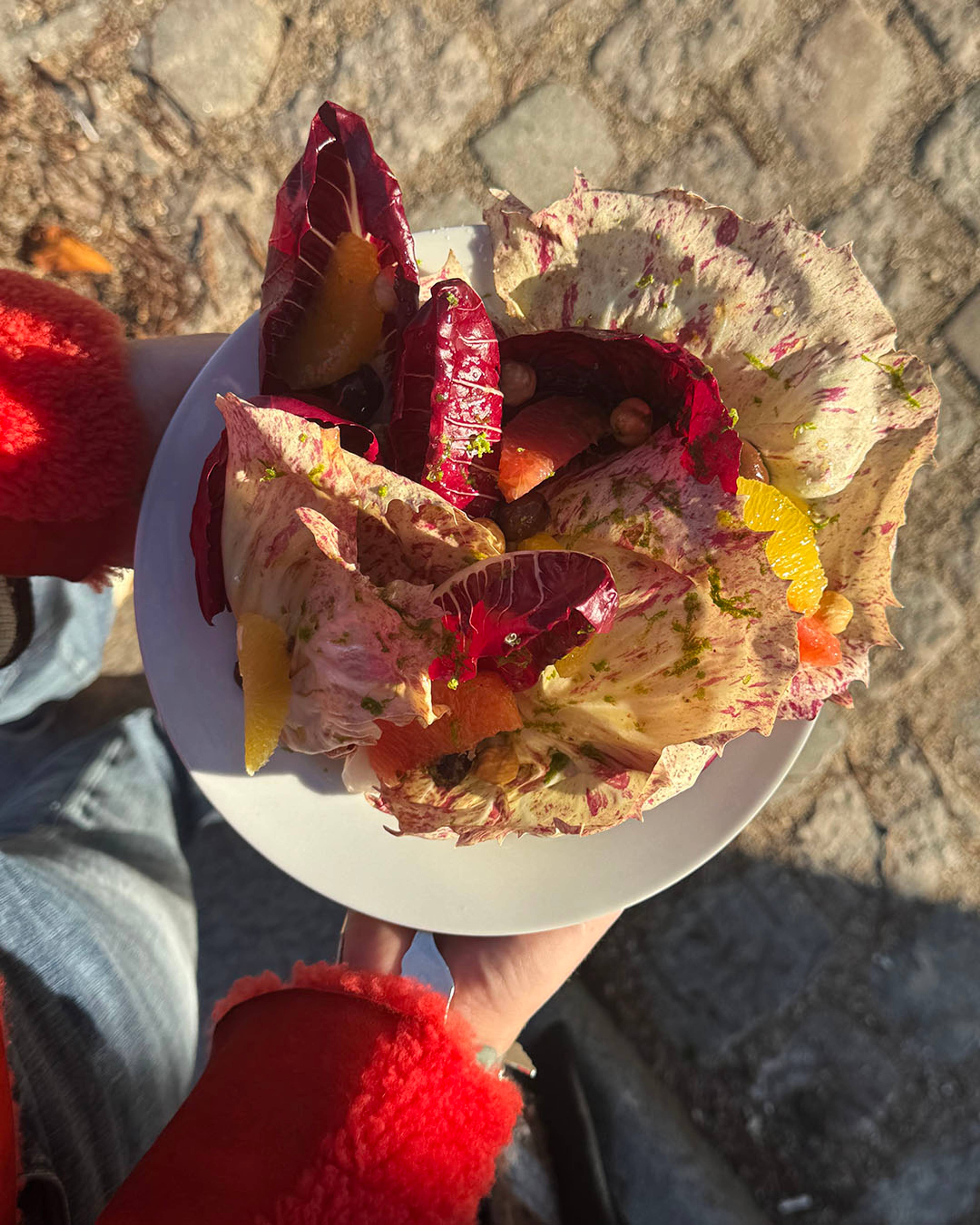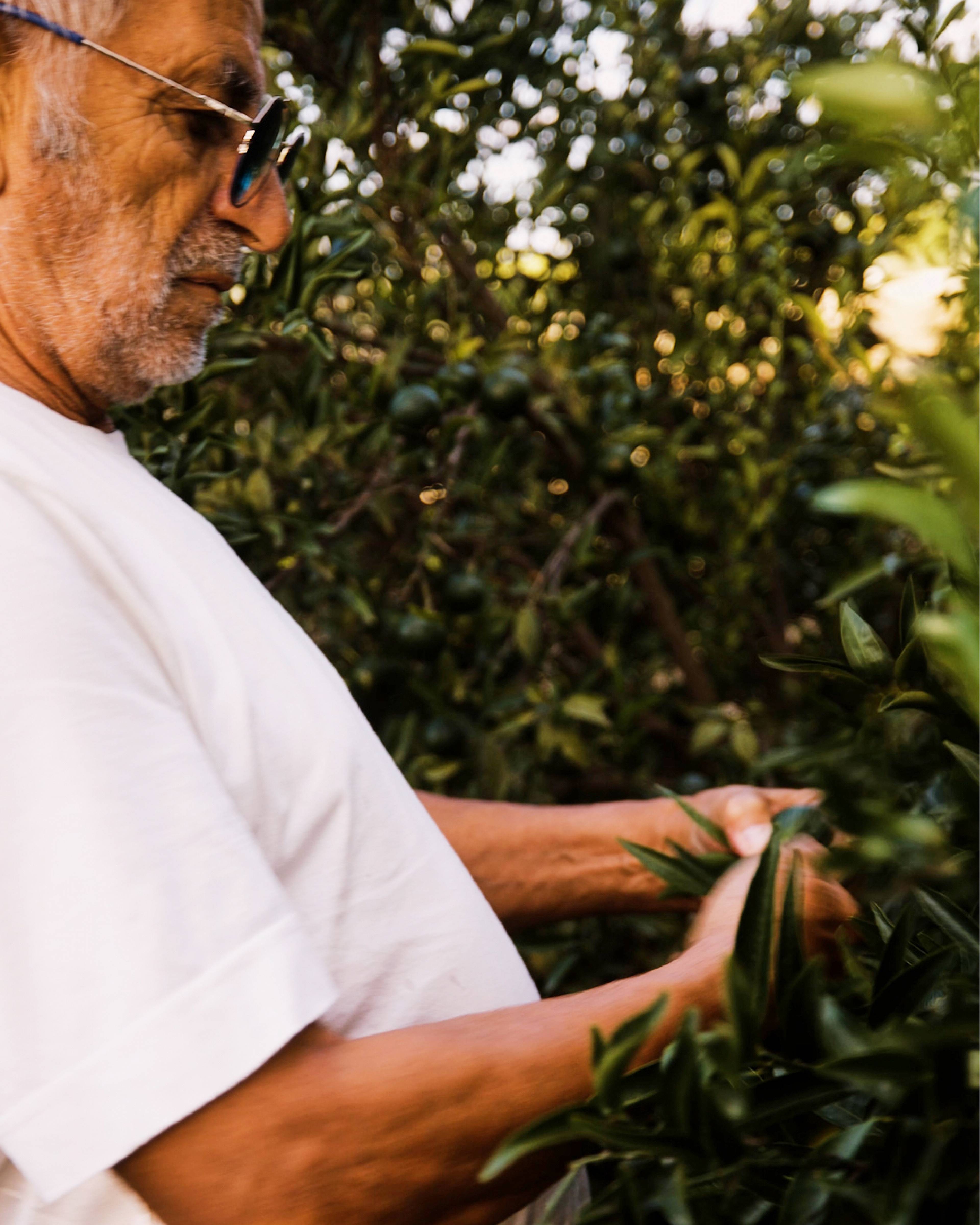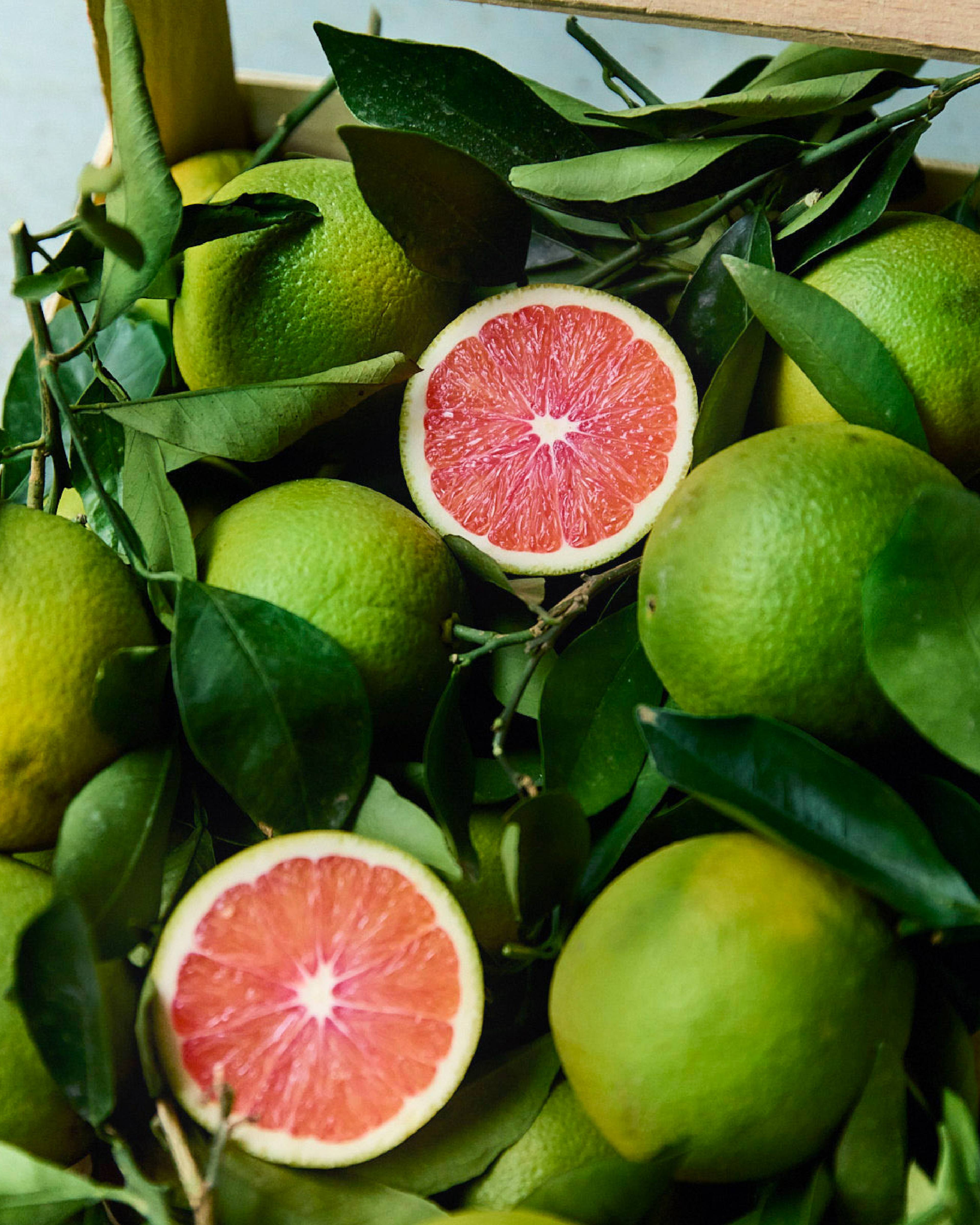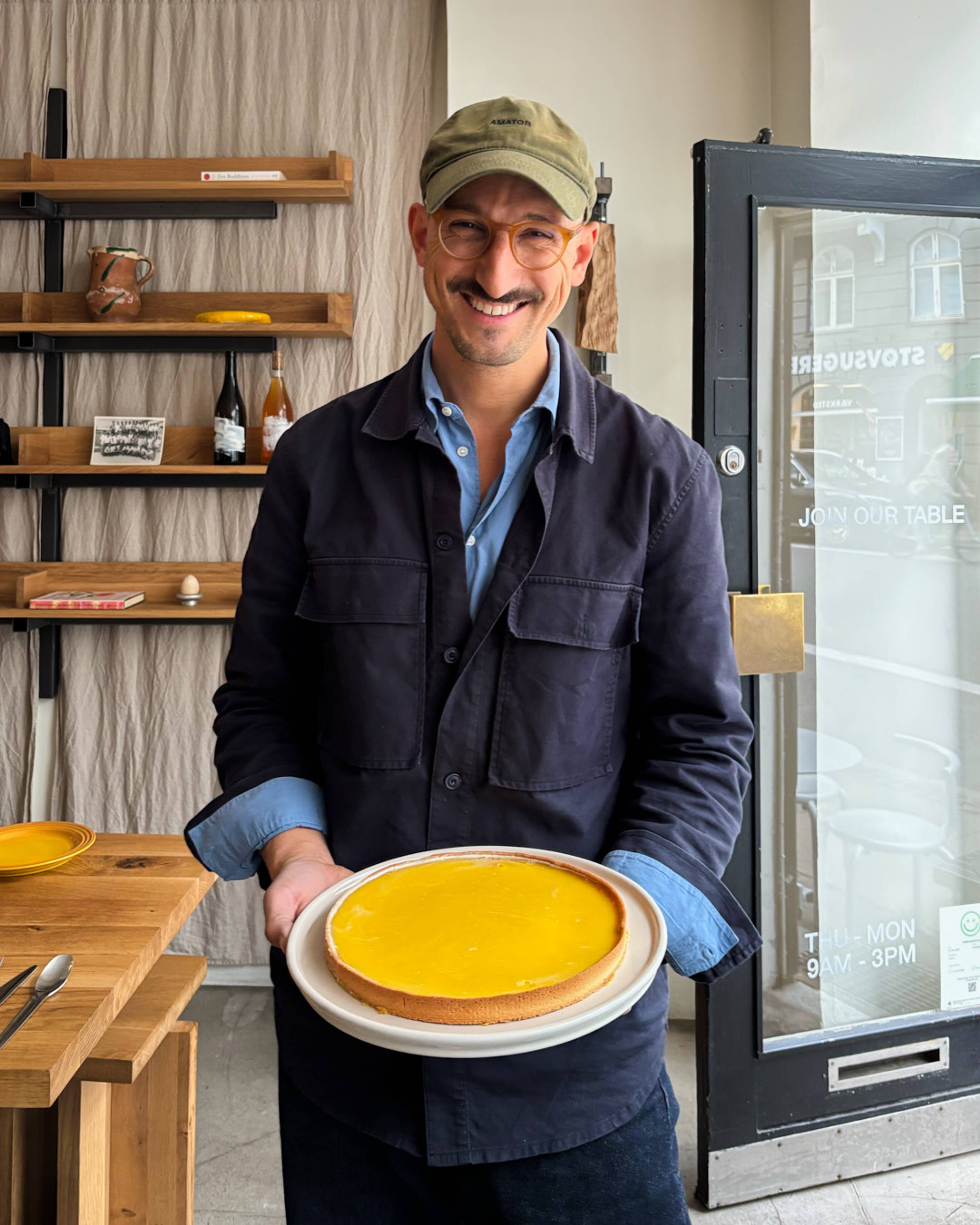CUORE DEL VESUVIO, CERIGNOLA OLIVE & GREEN HARISSA SALAD WITH BEN RAND
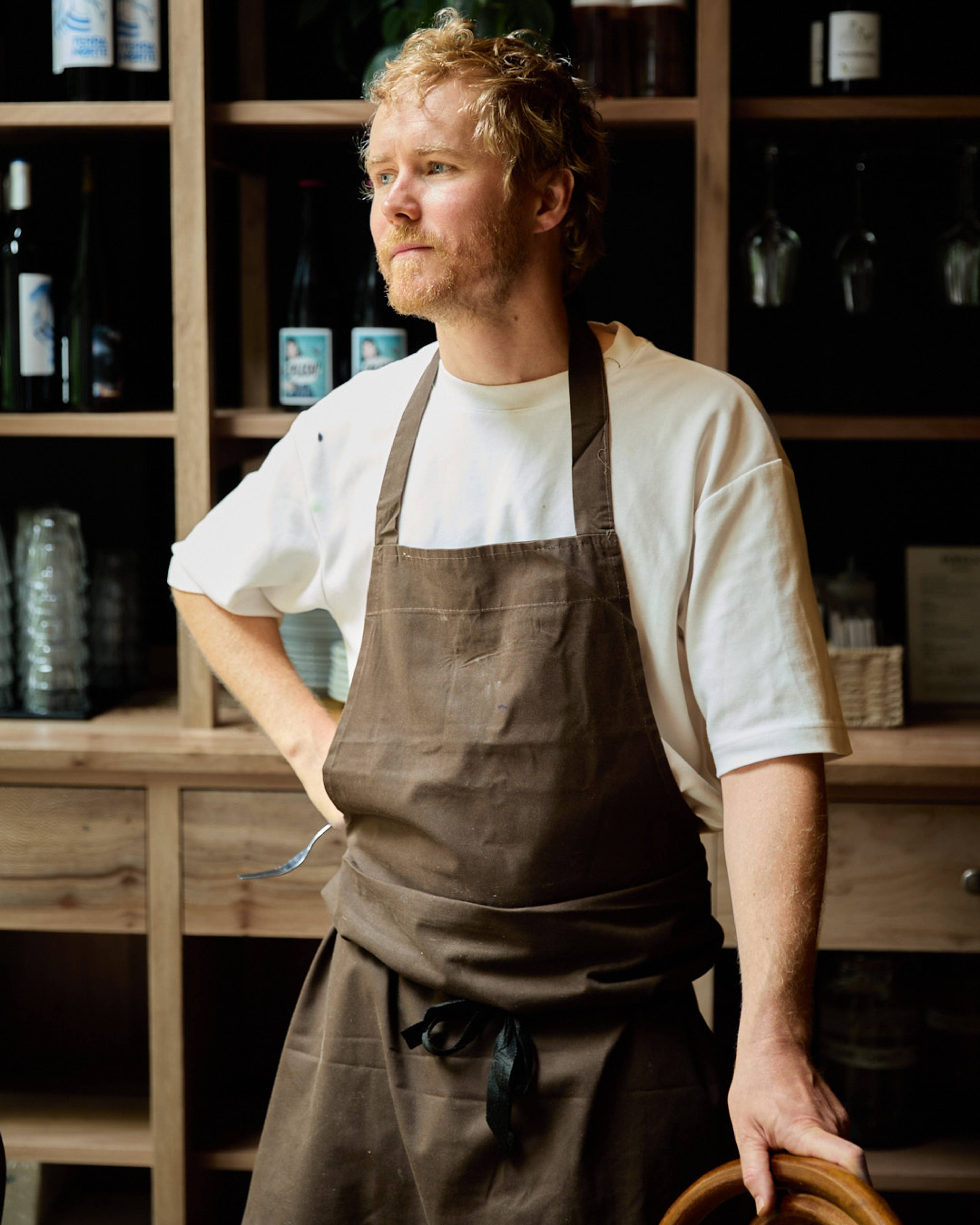
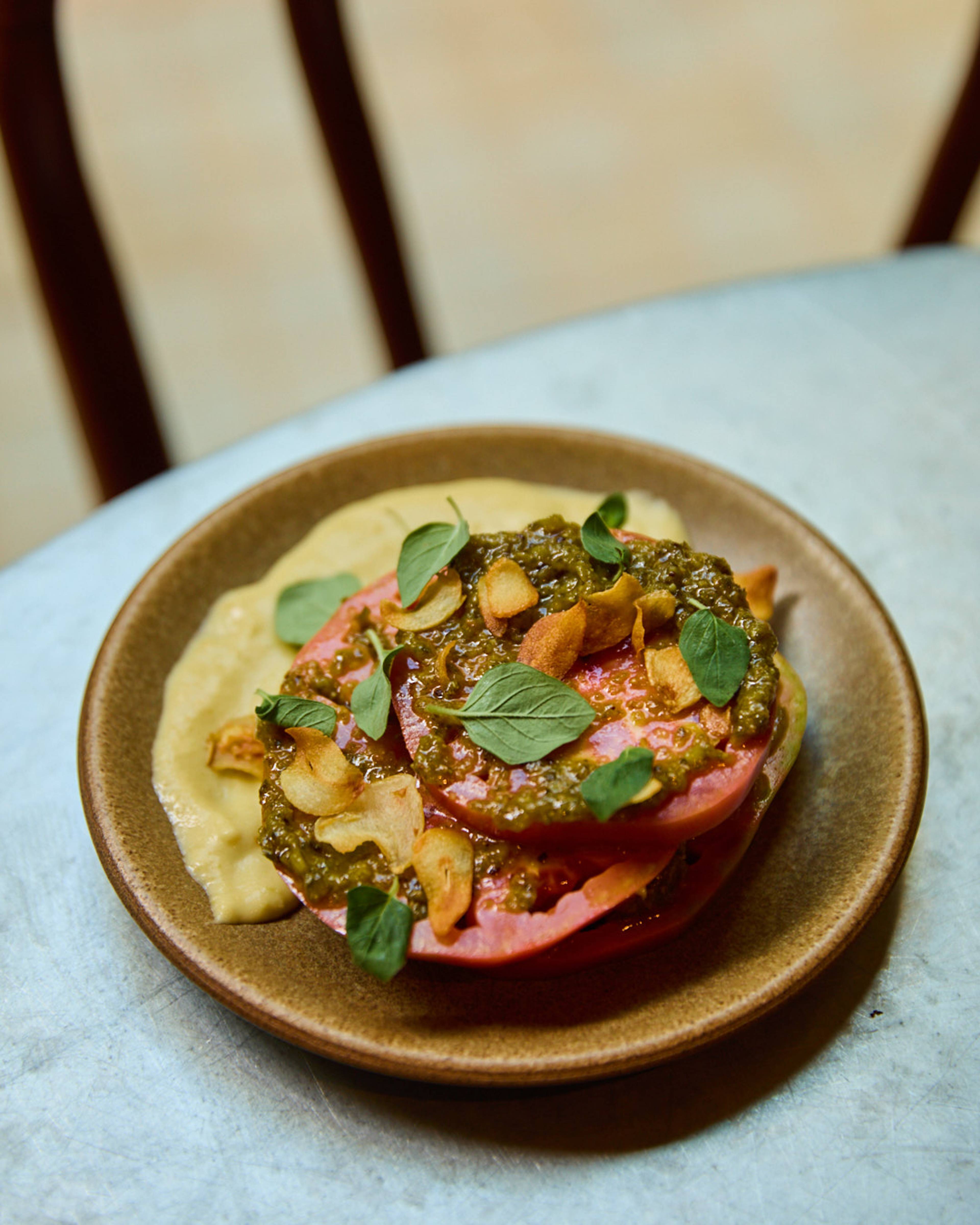
There’s a gentle buzz inside the restaurant this morning. Though the tables are empty with a few hours left until opening, Bubala King’s Cross already feels alive. The team are preparing staff breakfast in the open kitchen: a feature that mirrors the charm of traditional Middle Eastern cafés and reflects the warmth this restaurant has become well known for over the past six years.
Late morning light pours through the large arched windows, casting a soft glow across the room. With the day already warm, we opt for a seat on the terrace, pulling up olive green chairs against the backdrop of Bubala’s signature terracotta walls.
Our conversation with Ben Rand, Bubala’s executive chef, flows between culinary creativity, Cuore del Vesuvio Tomatoes, nostalgic puddings, and produce that tells a story. We learn that seasonality is central to Ben’s cooking and inspiration from around the world shapes the menus he creates.
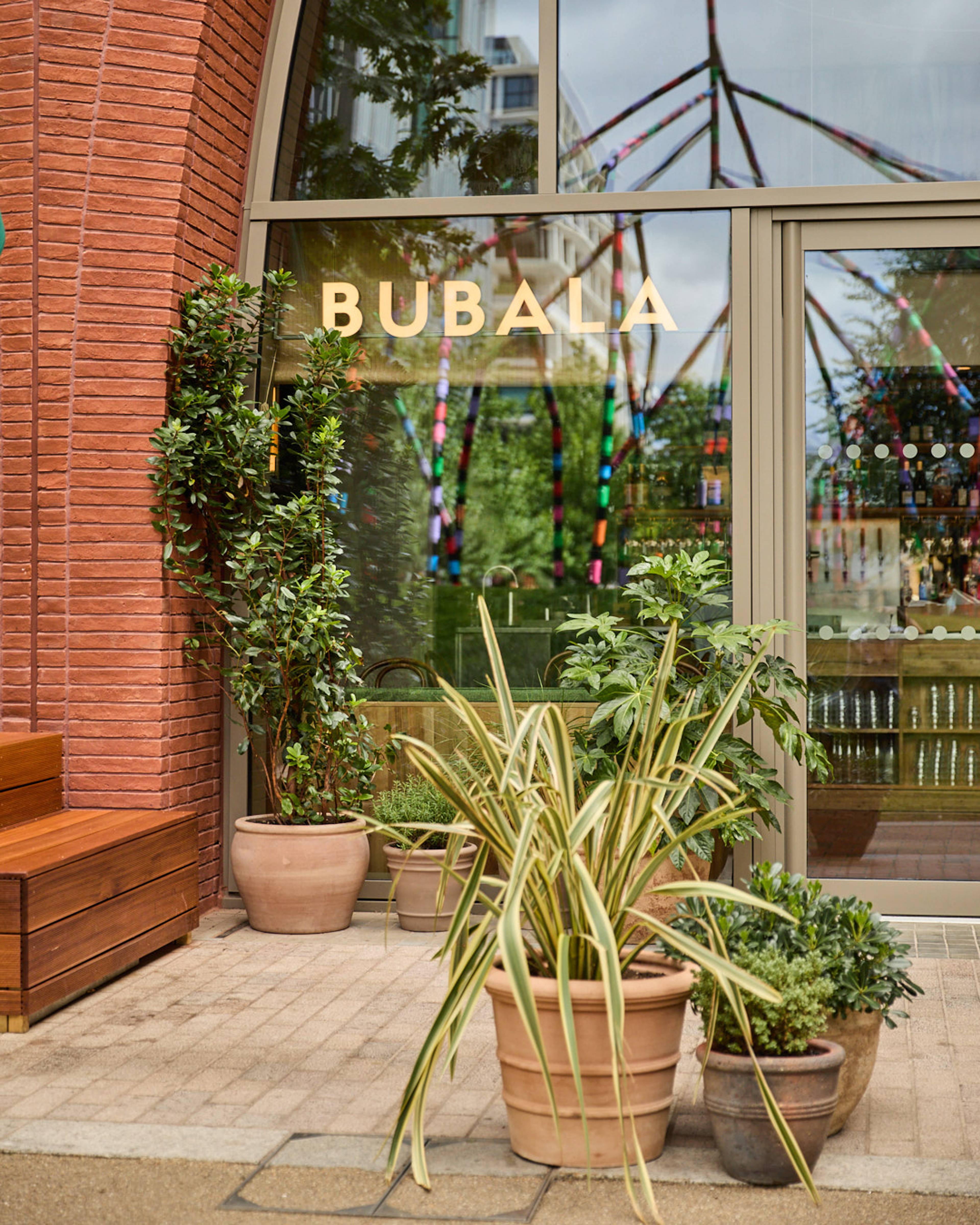
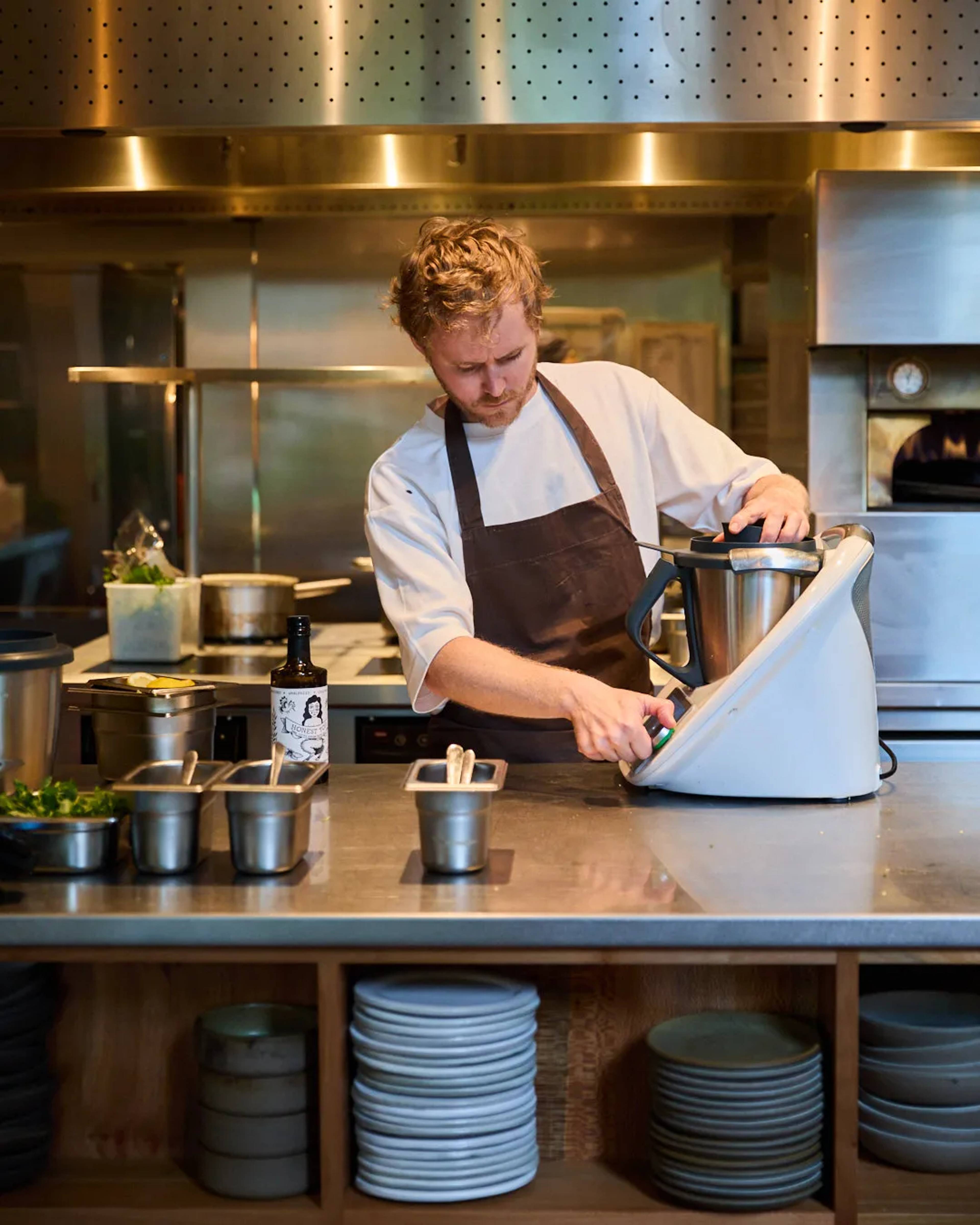
About a 10-minute walk from King’s Cross Station, this is the group's third and biggest restaurant. The first Bubala originally launched as a pop-up, followed by permanent openings in Soho, Spitalfields and now, King’s Cross. Come October, they’ll be publishing ‘BUBALA: The cookbook’ which is now available to pre-order. The book brings together more than 100 recipes, as well as stories from the pop-ups and the three restaurants they have today.
Bubala’s style is said to be characterised by sharing plates, lots of spices, and flavour bombs. So flavour, of course, felt like a natural talking point for us. “When you’re working with produce that’s been grown for flavour and picked at its peak, it makes the job of a chef so much easier. It means you’re already two steps further down the line,” explains Ben.
Earlier this morning, he prepared a Cuore del Vesuvio, Cerignola Olive and Green Harissa Salad for us.
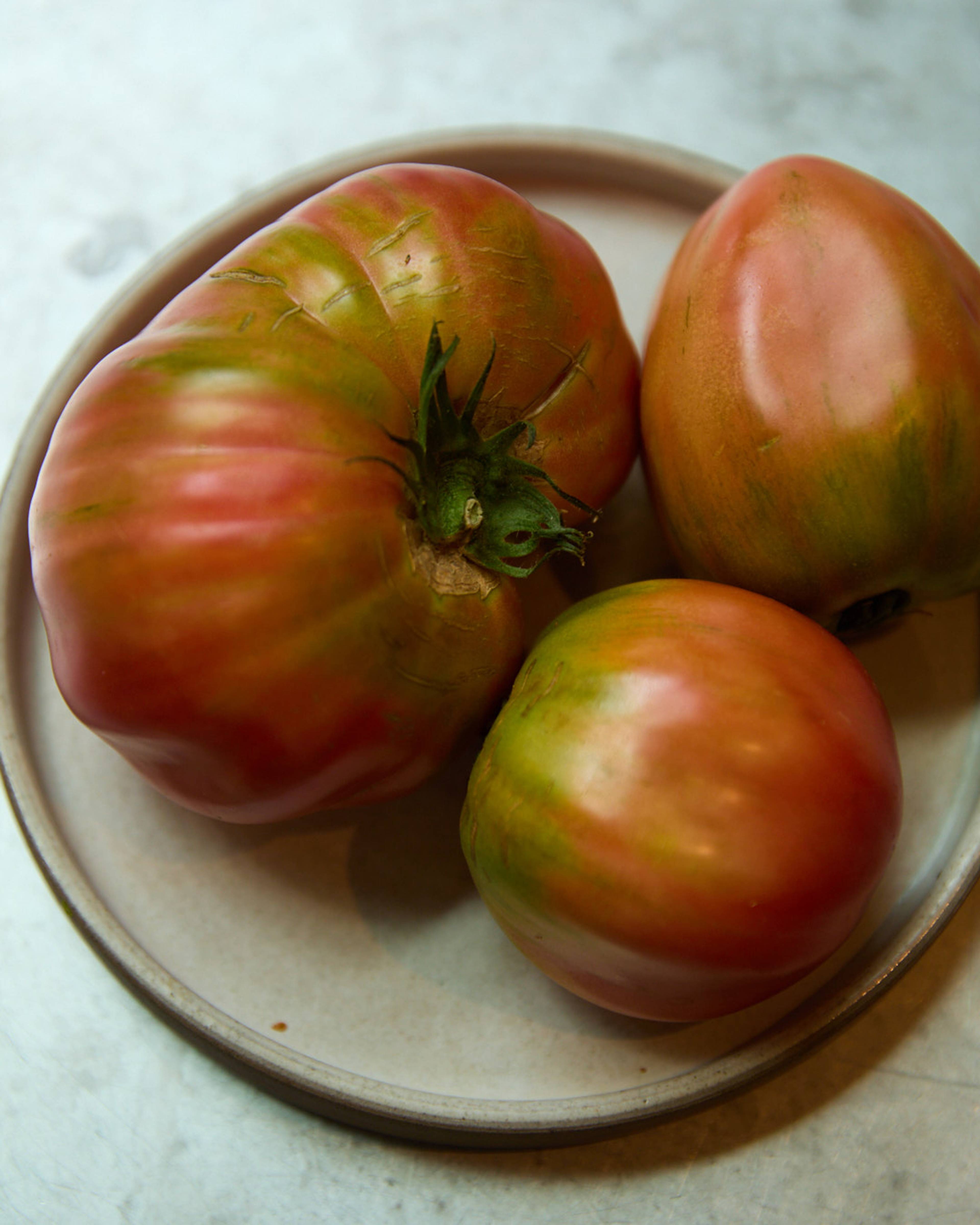
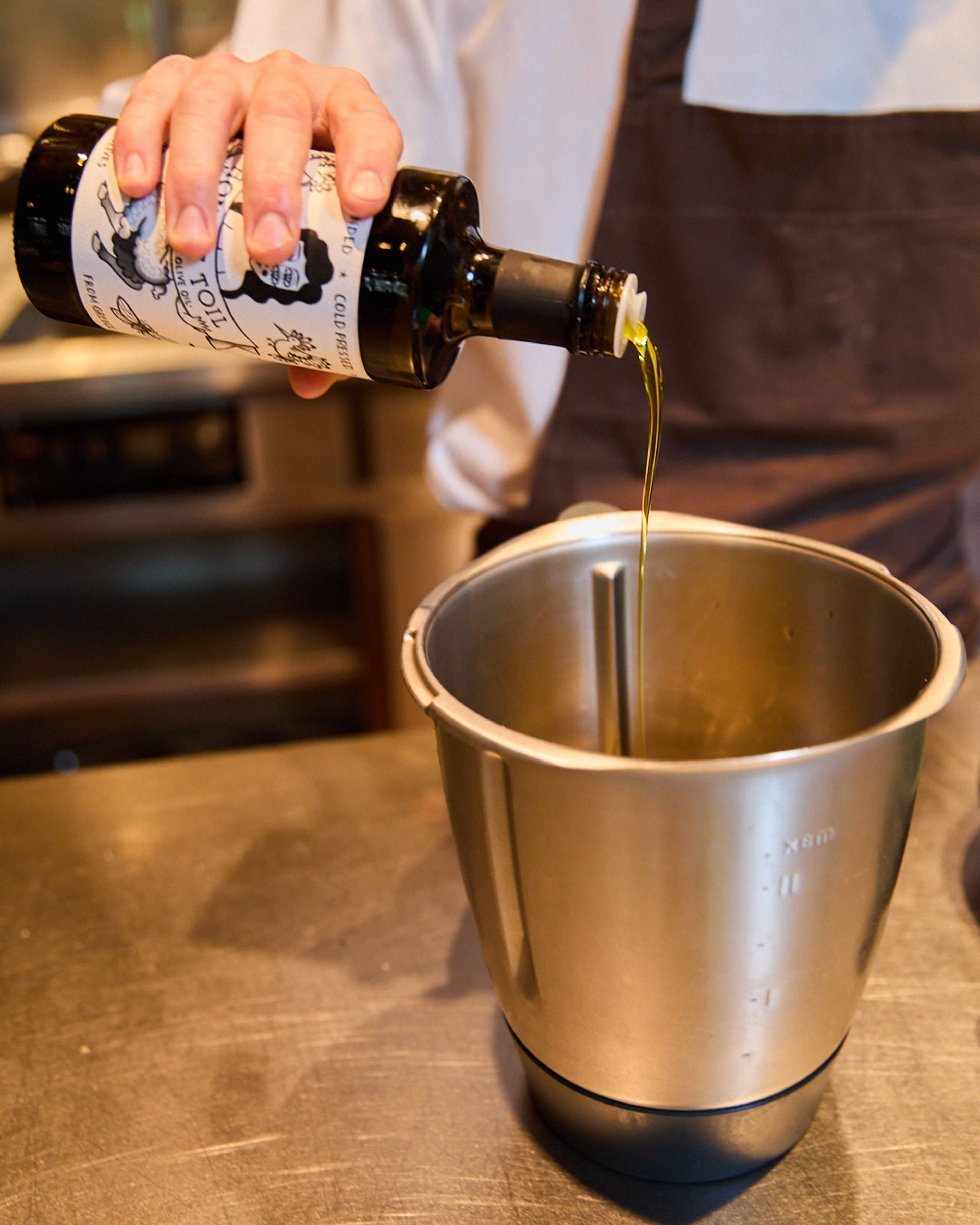
“It's a fairly simple dish to put together. The Cuore del Vesuvio Tomatoes are amazing, and every year we look forward to them coming back around. We don’t cook the tomatoes, we just slice them and add a little salt. That’s really all they need.”
When sourcing ingredients for his menus, Ben seeks out varieties that capture the imagination, or better still, tell a story.
The Cuore del Vesuvio tomatoes in this dish are grown by Raffaele in Campania, on stepped hillsides overlooking the Bay of Naples. Cultivated in volcanic, mineral-rich soil, these dense Bull’s Hearts are as distinctive as the landscape they come from.
Our founder, Franco, grew up eating these and was struck by the extraordinary complexity of Raffaele’s tomatoes when he first tasted them back in 2008.
As with cultivating cucumber, melon and other varieties of tomato, controlling water intake is really important. Raffaele stays on top of this brilliantly by minimally watering his plants. This, as you might imagine, is a careful balancing act – ensuring that the plant stays alive, but stressing it enough to produce the high concentration of sugar and nutrients, the key to its incredible flavour.
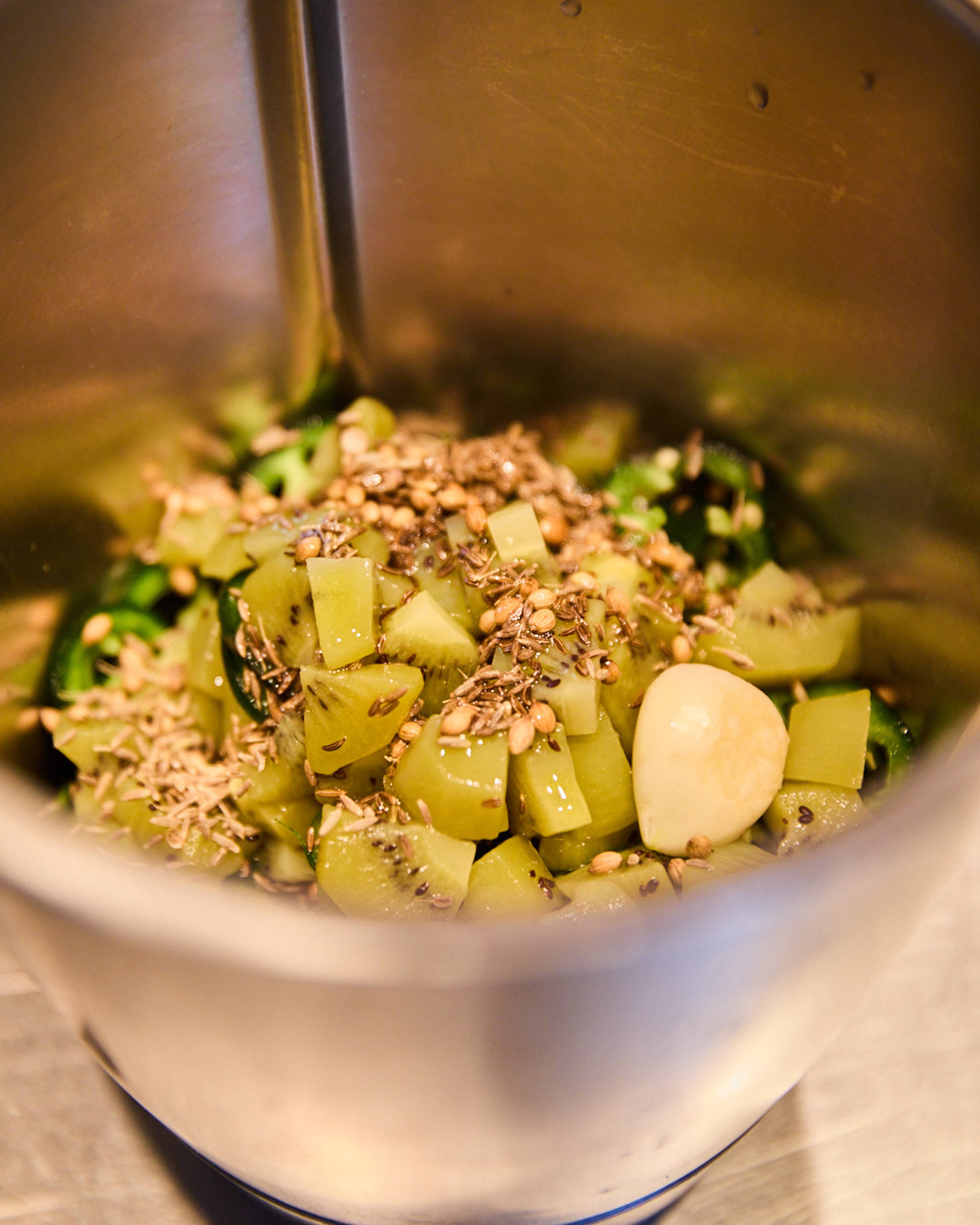
CUORE DEL VESUVIO, CERIGNOLA OLIVE & GREEN HARISSA SALAD
INGREDIENTS
3 slices of Cuore del Vesuvio
40g green harissa dressing
25g green olive juice
5g garlic crisp
Oregano
For the olive juice
75g pitted Cerignola Olives
75g olive brine reserved from above the olives
25g Honest Toil Extra Virgin Olive Oil
Pinch of sugar
105g lemon juice
For the green harissa dressing
560g jalapeño
20g peeled garlic
8g Caraway seeds
16g Diaspora Co Jodhana Cumin seeds
16g Diaspora Co Nandini Coriander seeds
280g fermented Kiwi
100ml Rapeseed oil
METHOD
- To make the garlic crisps, begin by pre-heating the oven to 160°C.
- Slice the garlic.
- Deep fry in batches until they just start to turn golden. Remove them just before they’re ready, so that the carry-over of cooking makes them perfect.
- Drain in thin layers on J cloths and break up the flakes while they’re drying within the first few minutes (Note: If they are fried too hot or too long, they become incredibly bitter). Set the garlic crisps aside.
- Next, to make the green harissa dressing, simply mix the above ingredients together in a bowl, season with salt, and set aside.
- To make the green olive juice, blend all ingredients together until smooth and emulsified.
- Cut three slices of tomato and season lightly with malden salt.
- Dress each with a teaspoon of green harissa dressing.
- Spoon green olive juice onto the base of the plate, stack the three tomatoes up, off center, each one askew of the one above.
- Dress with garlic crisps and picked oregano.
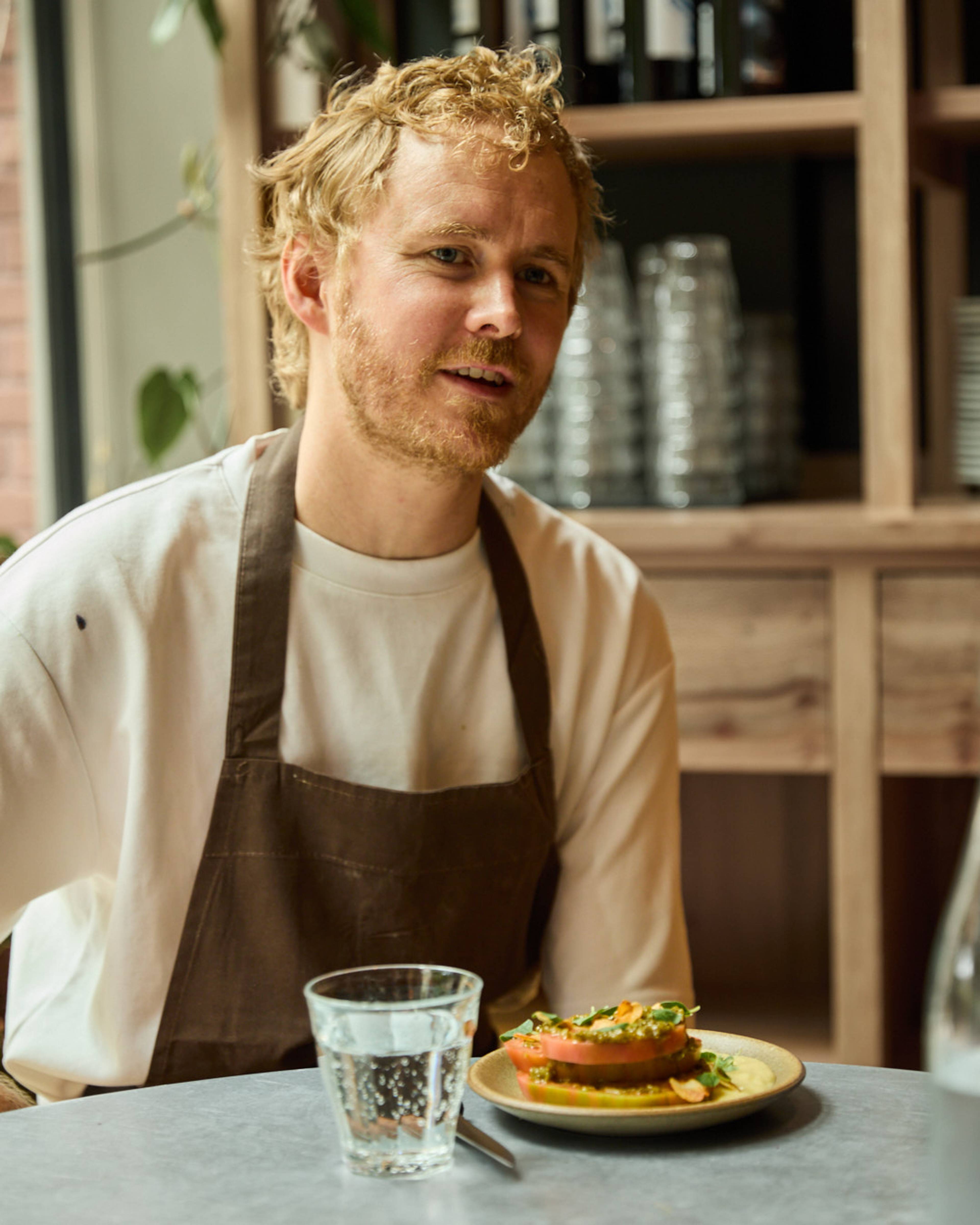
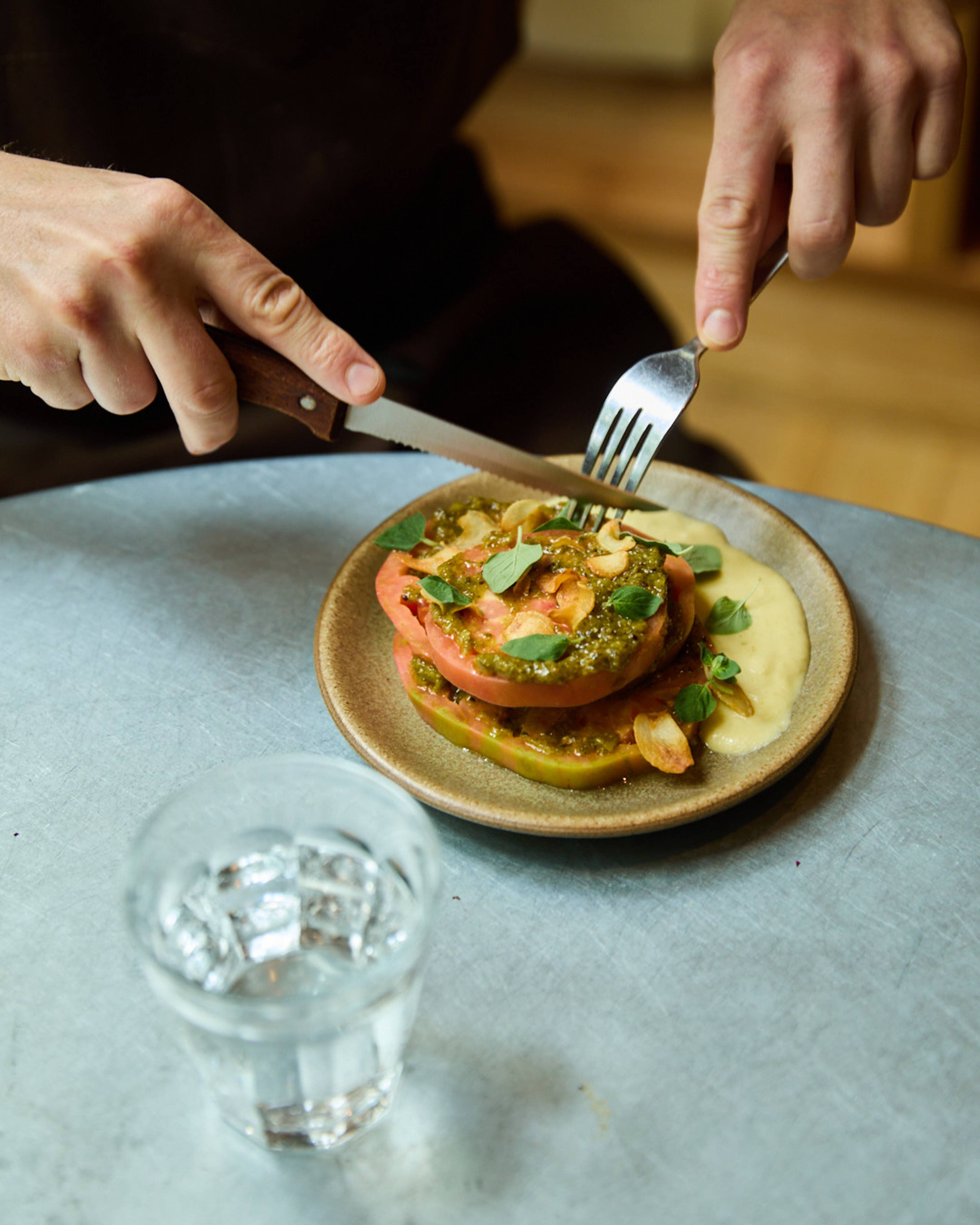
Let’s start with your journey into food. What first drew you to cooking, and how did that lead you to Bubala?
I was lucky to grow up in a home where my mum cooked a lot, and my dad grew food. So, cooking was always a very natural thing.
Later on, I got into cooking as a way of travelling. Since food is part of every culture, you can pretty much get a job anywhere in the world! After doing that for a number of years, I realised, this is what I want to do. And the more I've done it, the more I’ve learned and grown.
I’ve now been in London for around 15 years, working in a range of restaurants that were all very produce-led, with a strong focus on British and European seasonality. I joined Bubala about a year and a half ago. The ethos here really aligns with my own values.
Could you tell us a little bit about the recipe that you've chosen? What inspired you to choose the ingredients?
It’s a fairly simple dish to put together. The Cuore del Vesuvio tomatoes are absolutely amazing, and every year we look forward to them coming back around. When you cut them open, they’re almost like a melon inside.
Earlier, some of the team were trying the off-cuts in the kitchen and were saying, “Oh my God, these are amazing”.
This is essentially a really nice tomato salad. We don’t cook the tomatoes, we just slice them and add a little salt. That’s really all they need.
Bubala is entirely vegetarian. Do you think this can be a creative advantage?
The vegetarian focus is a big part of what defines Bubala’s food, it’s part of the identity. I think in any creative process, having boundaries is really helpful too, it’s an asset: it provides a clear direction.
How important is seasonality to you in the way that you cook and eat?
Seasonality is fundamental to delicious food.
When you’re working with produce that’s been grown for flavour – rather than to be a commodity – and picked at its peak, it makes the job of a chef so much easier. It means you’re already two steps further down the line.
In this case, we’re starting off with a beautiful tomato and we hardly need to do anything to it. Without produce like that, you’re starting with bad building blocks.
Do you seek anything specific when sourcing produce?
Produce that captures the imagination. Produce with a story. This is what makes the food feel real and this is exactly what we want to be working with.
It’s also about doing the right thing. Often, doing the right thing is the more expensive thing, but it’s important to make sure a fair price is paid all along the food chain.
At Bubala, one of our core values is integrity, so we want this to be reflected in what we buy.
Your cooking draws on flavours from across the Middle East and beyond. We also noticed there was a Malaysian-inspired collaboration for the restaurant’s 5th birthday. What’s your process for putting together fusion dishes and what inspires you?
For our fifth birthday, we hosted a series of dinners with chefs like Abby Lee of Mambow and Lewis de Haas of Crispin. It was really interesting to see their approaches. Abby, for example, created a Malay green sambal dressed with hummus.
There are so many unique ingredients from around the world. While we’re inspired by Middle Eastern flavours, what we serve is uniquely Bubala. We draw inspiration from everywhere: whether it’s Italian tomatoes or Mexican jalapeños. These elements aren’t juxtapositions; instead, there’s a real synergy in that diversity.
Do you have a favourite ingredient you always come back to?
Olive oil. At work and at home, I use an insane amount of olive oil! A little taste of the Mediterranean diet in the heart of London. It’s an obvious cooking fat, but it also brings out so much flavour.
Is there a dish from your childhood that still holds a special place for you?
Before every team briefing, we kick things off with a question. Yesterday’s was “What’s your favourite dessert?” For me, it has to be a rhubarb or red fruit crumble, with warm custard and a scoop of ice cream. It’s so comforting.
If we could take you out for a meal anywhere in Europe right now, where would you go, and why?
I’d love to go to Le Doyenné which is set on a farm just outside of Paris, run by chefs and owners James Henry and Shaun Kelly. It’s super produce-led and looks like a stunning building, too.
Stories
Voir toutWe exist to fix the food system.
People are more cut off from the origins of their food than ever. This makes flavour, nutrition and farming practices that protect the planet, almost impossible to find.
By working directly with growers, we create a more sustainable way forward for farming. By giving everyone the tools to understand the power of our food choices, we empower everybody to become drivers of change.
Now is the time for action. Join the food system revolution.

Go beyond four seasons
Each fruit and vegetable has its own season, with subtle shifts which happen every day. Follow their microseasons to unlock flavour at every stage.
WHAT’S IN SEASON?

Know where your food comes from
We know the name of the people behind everything we source. Recognise their growing artistry to find out exactly where your food comes from (and why that matters).
MEET THE GROWERS

Make your diet diverse
Our growers work with varieties chosen for quality and nutrition, not yield. By selecting their crops you keep heritage seeds in play, add to ecosystem biodiversity and preserve unique flavours.
PEAK SEASON BOX
United Kingdom
© 2025 Natoora Ltd.
